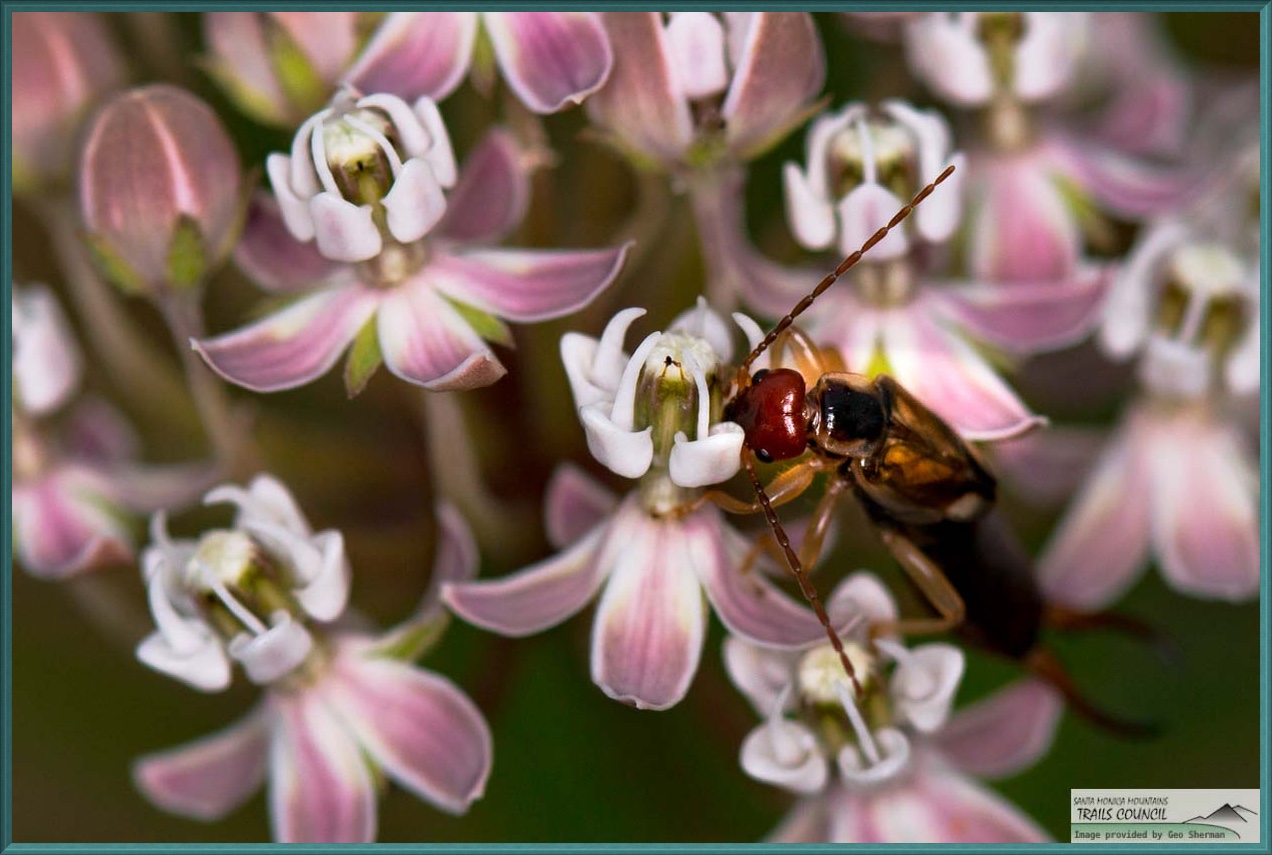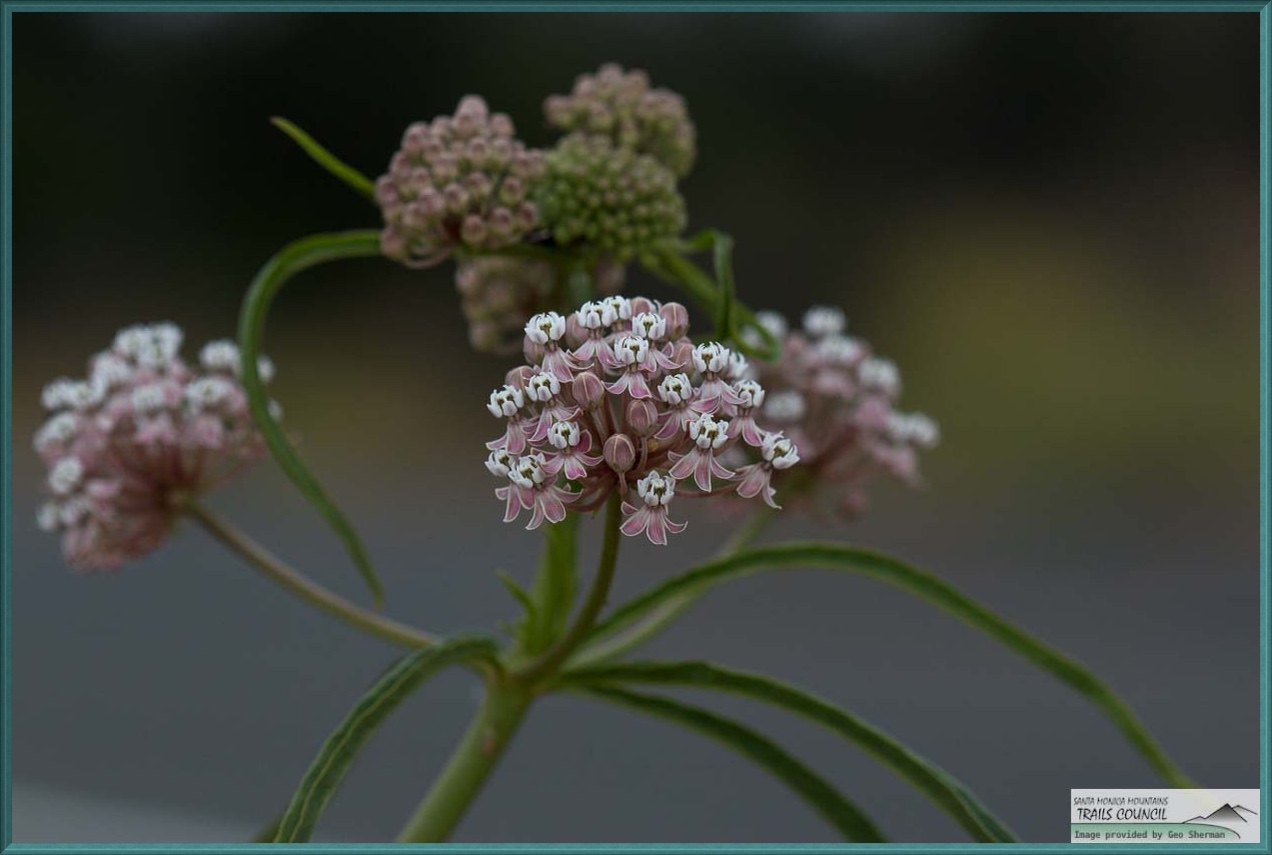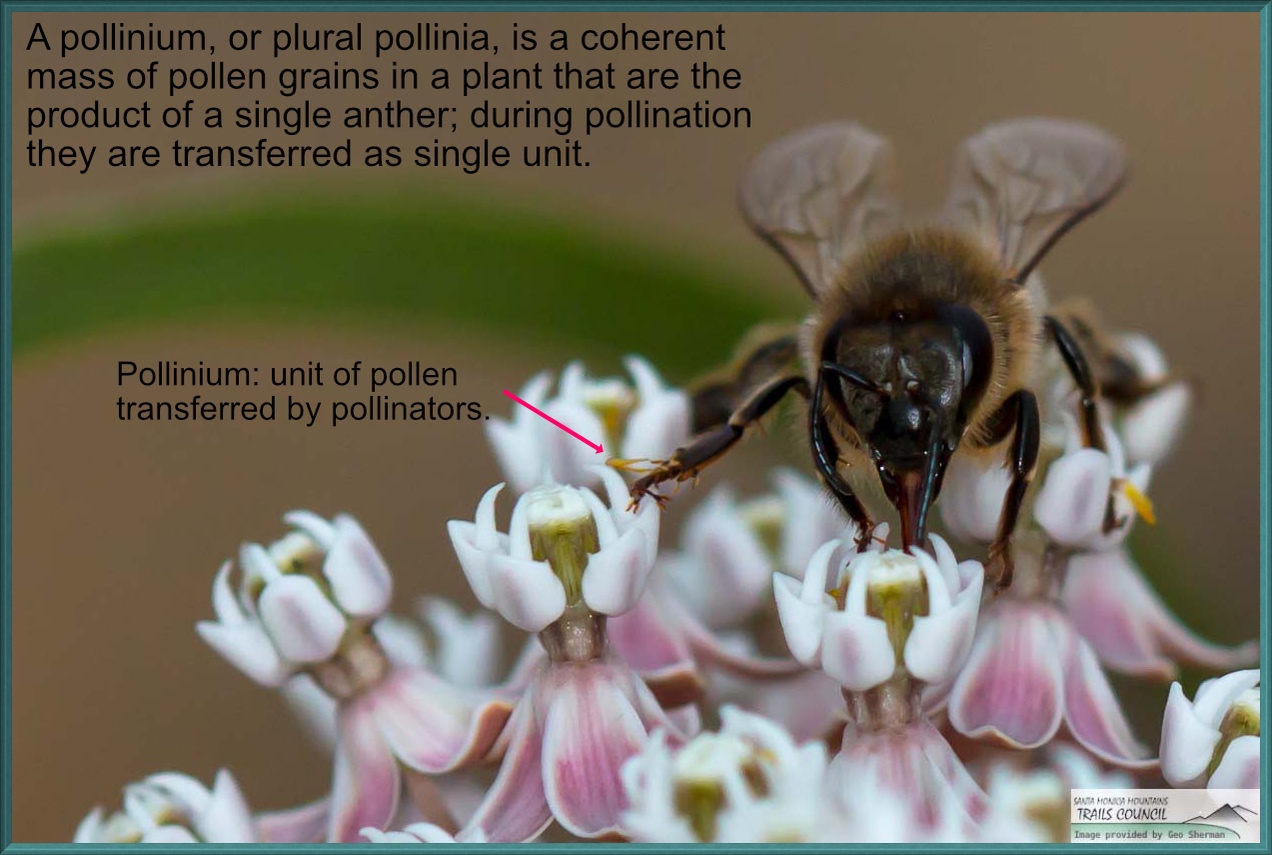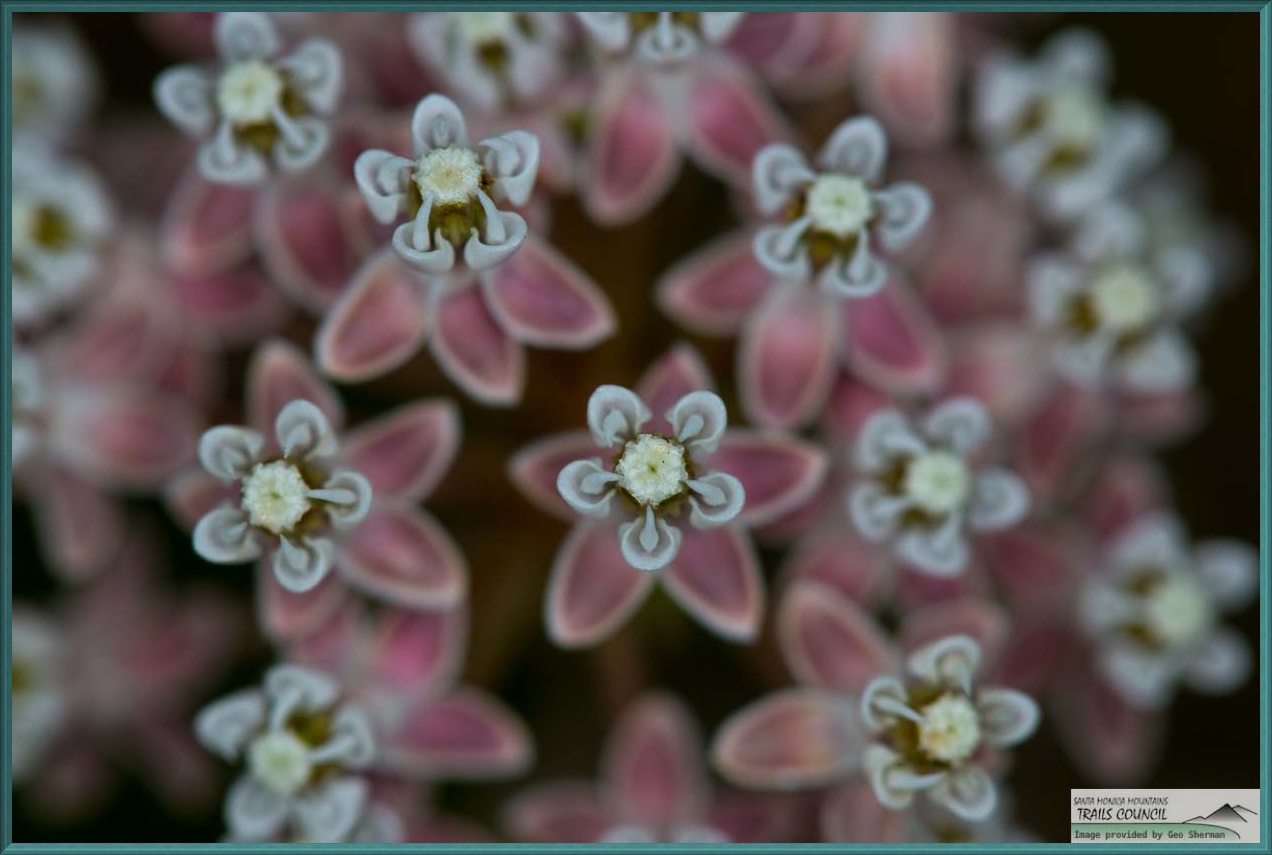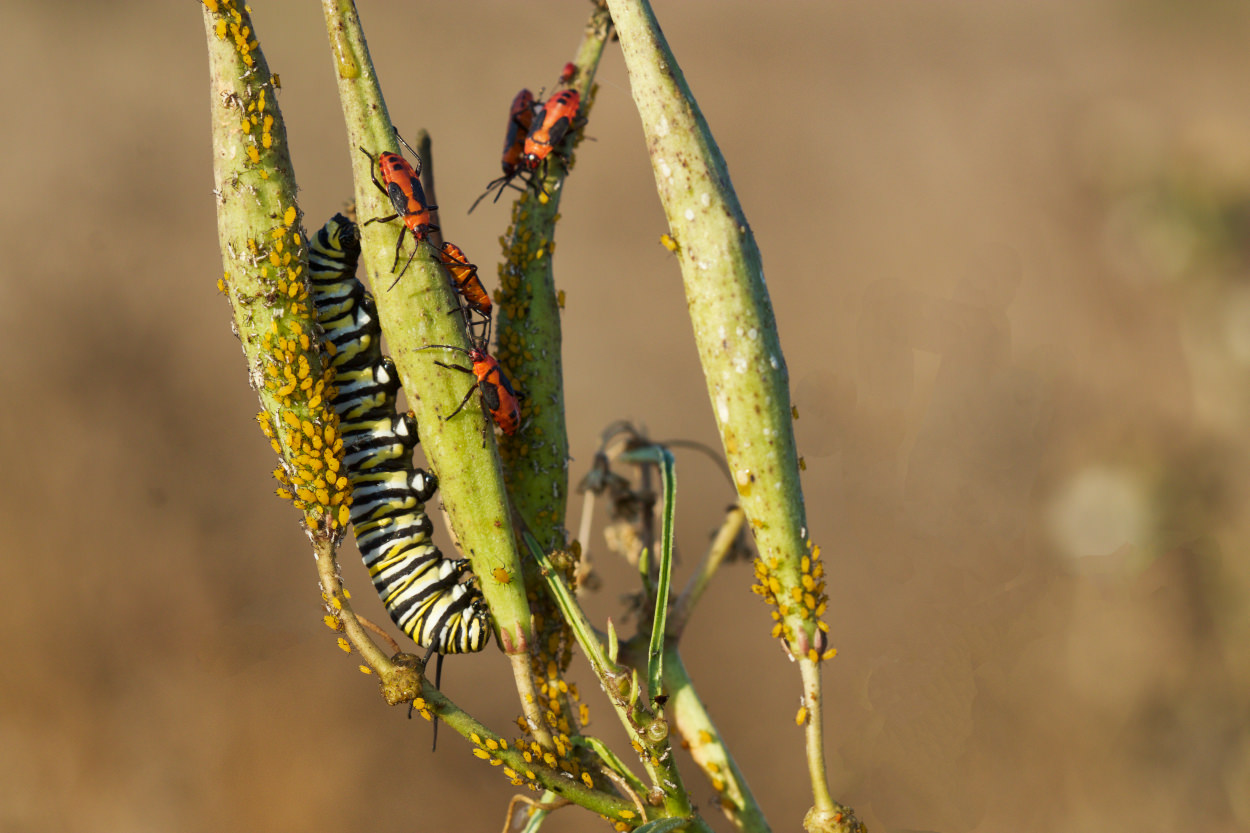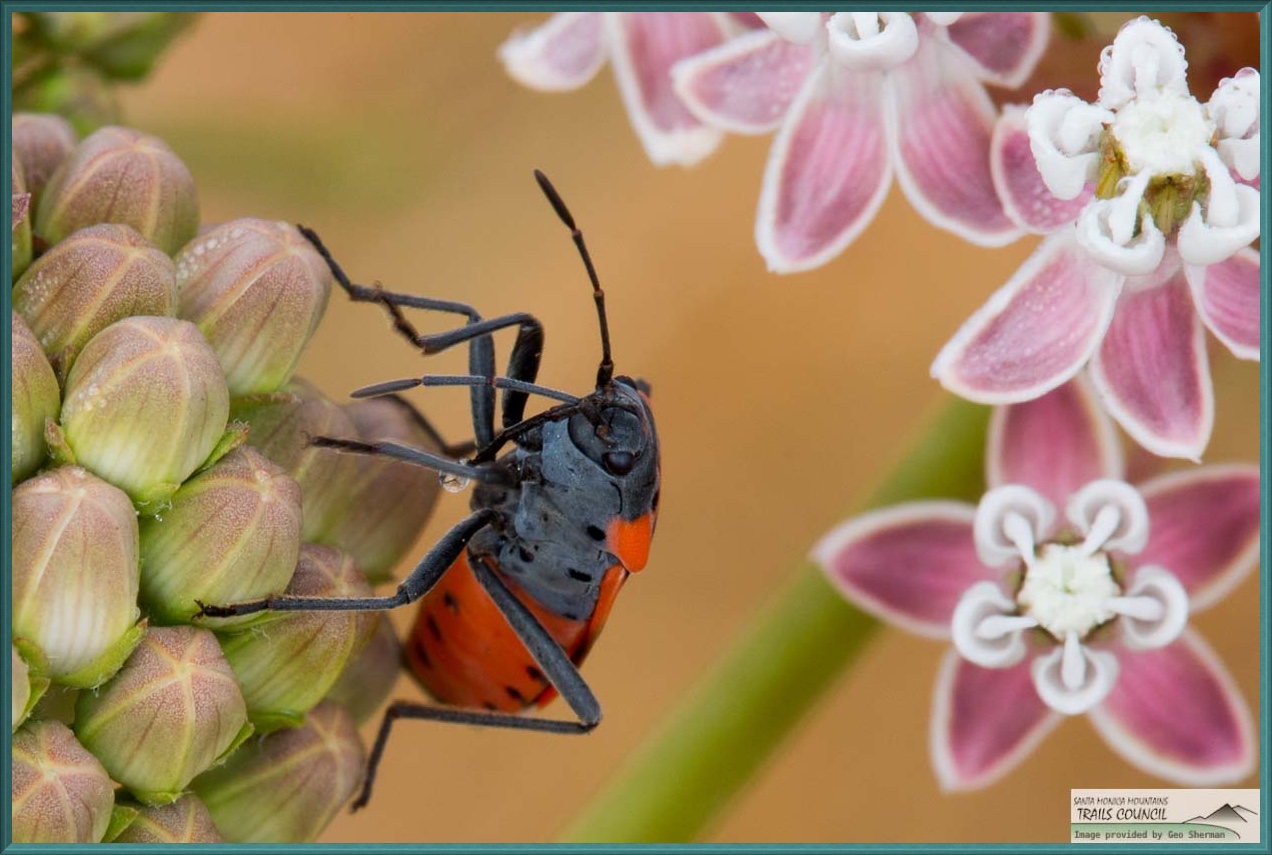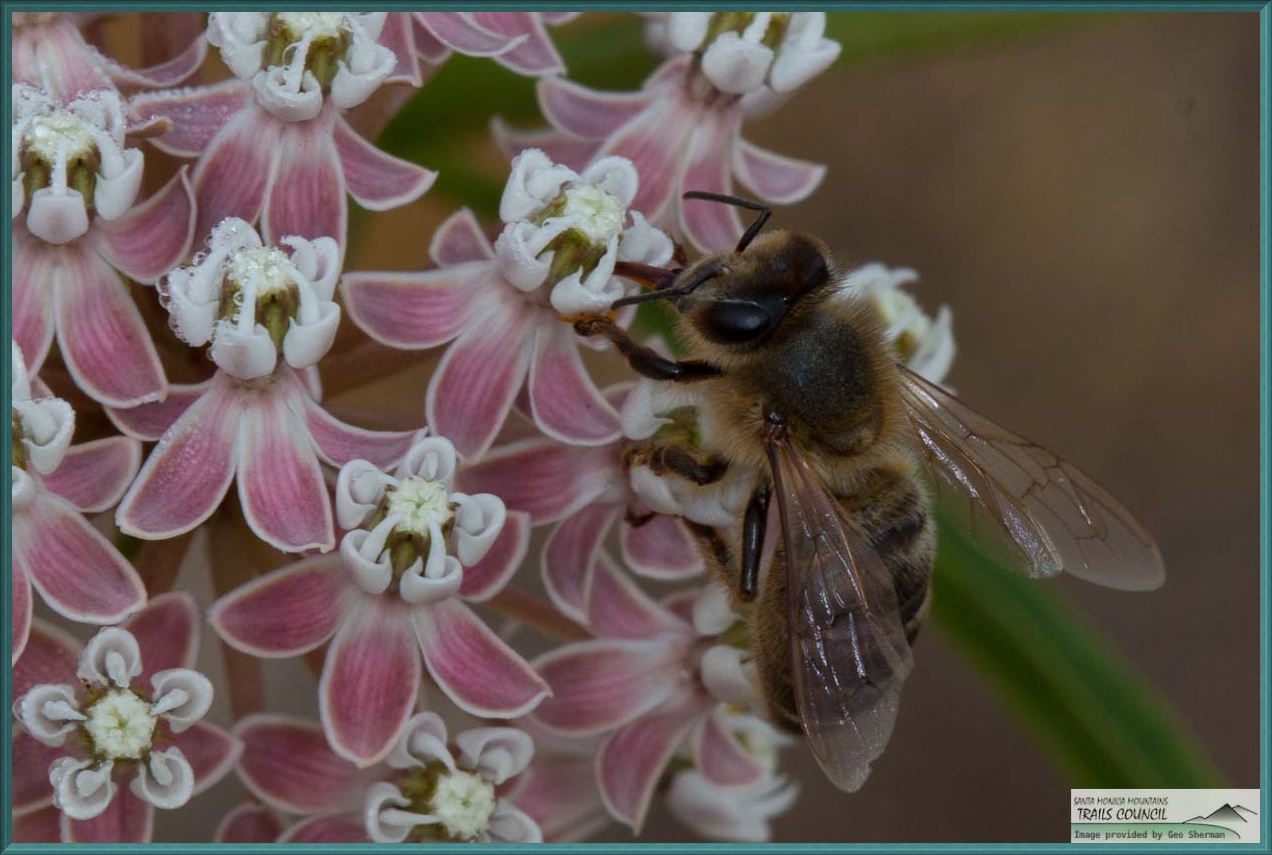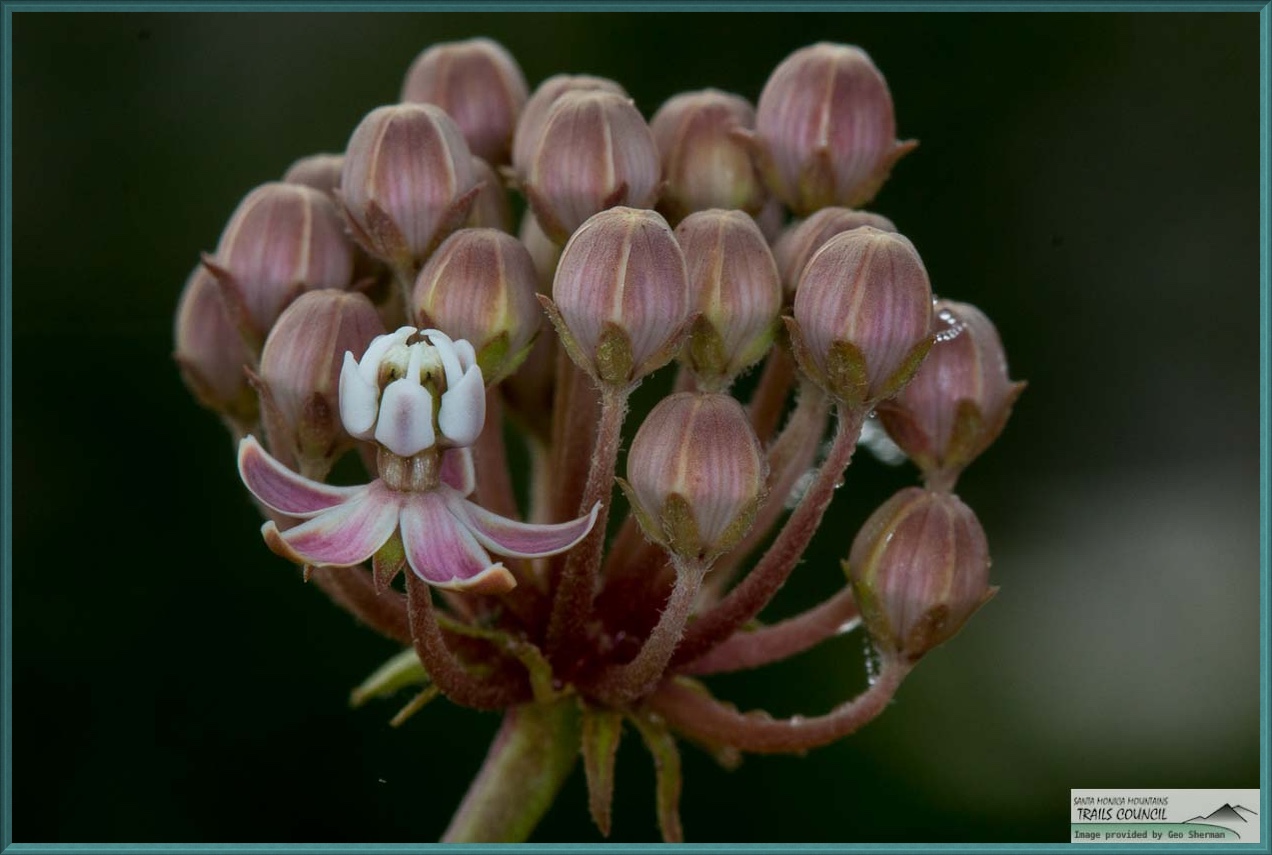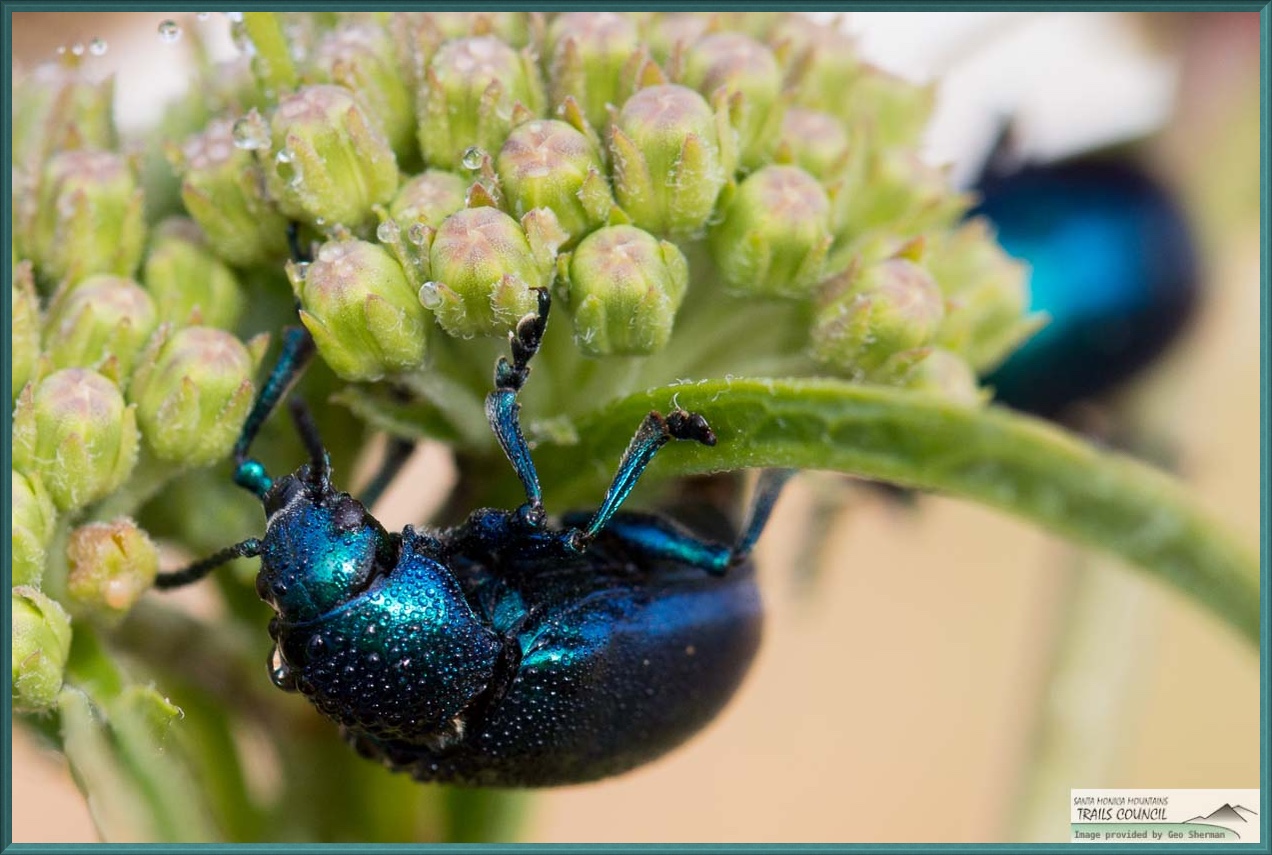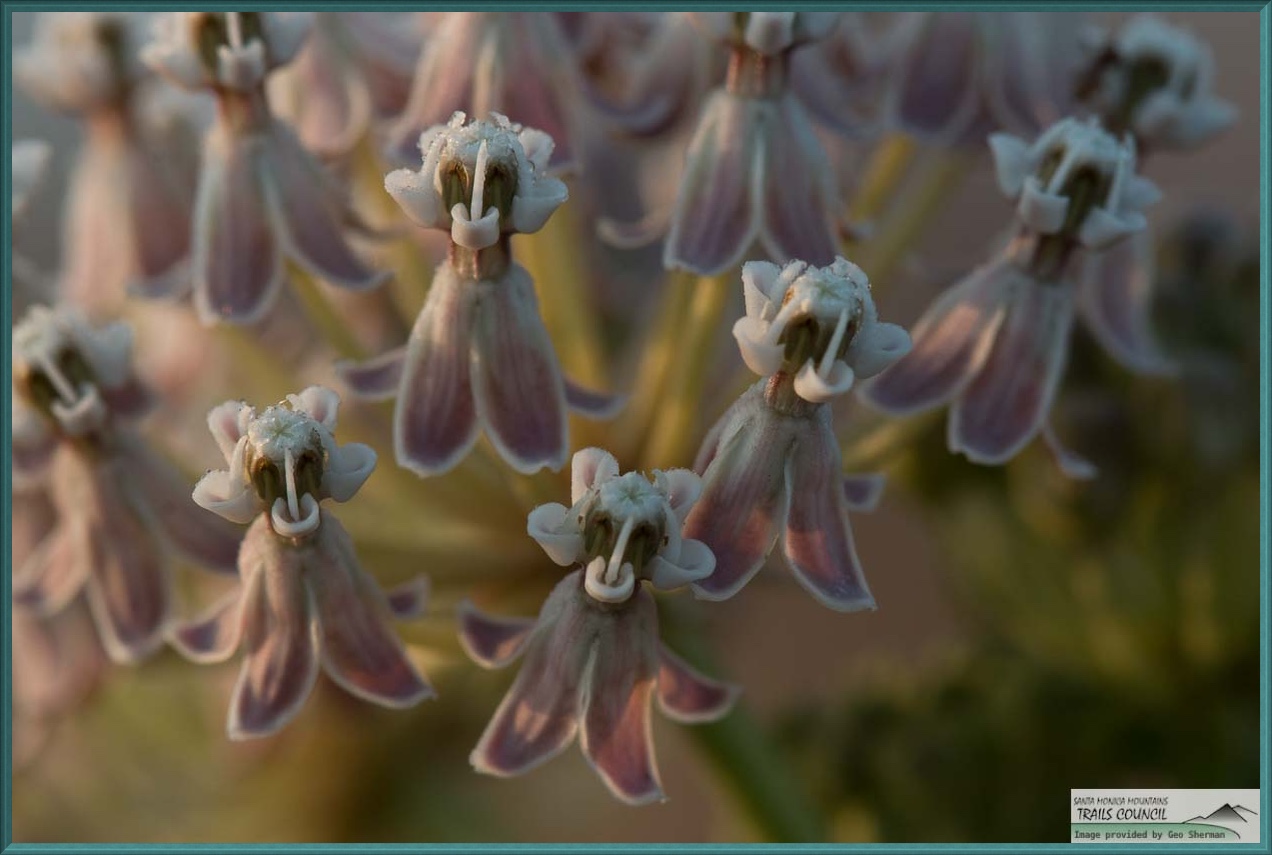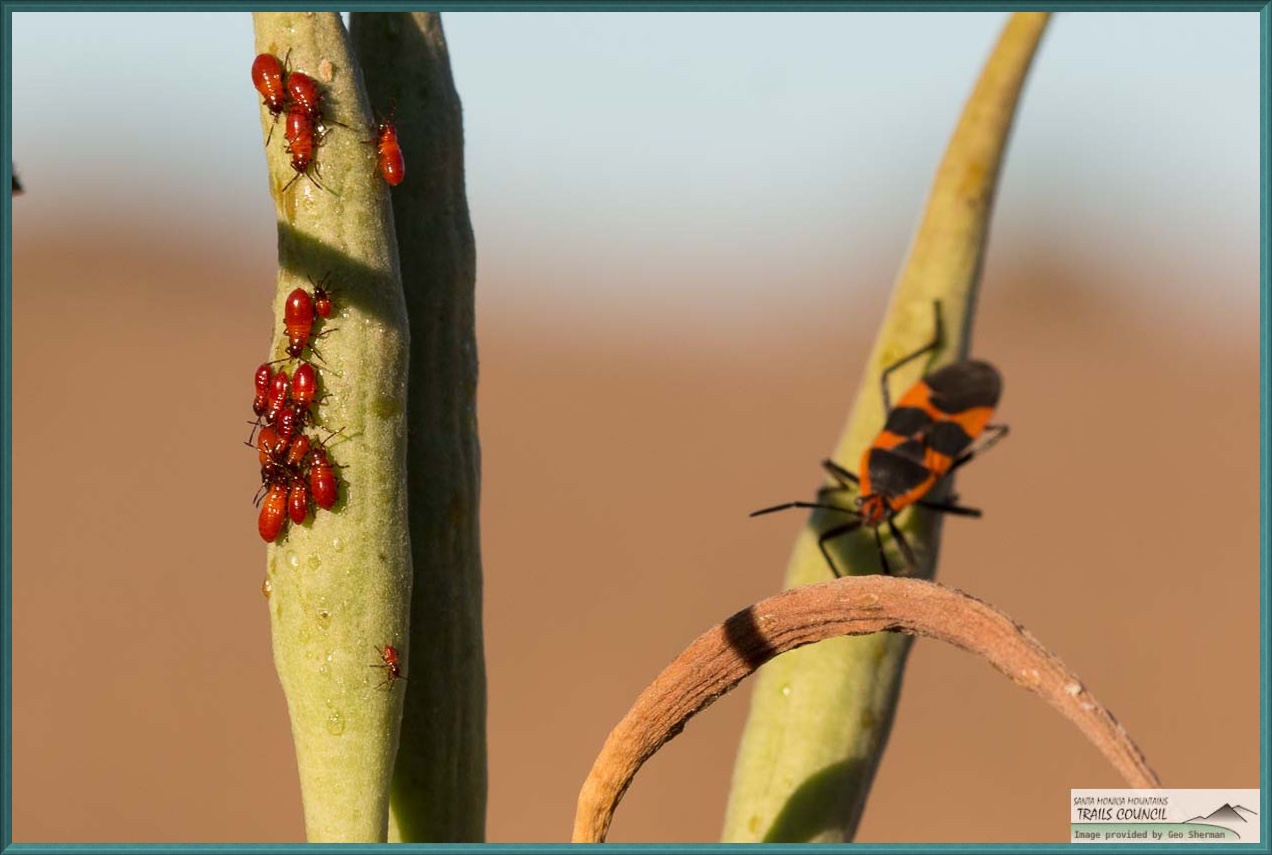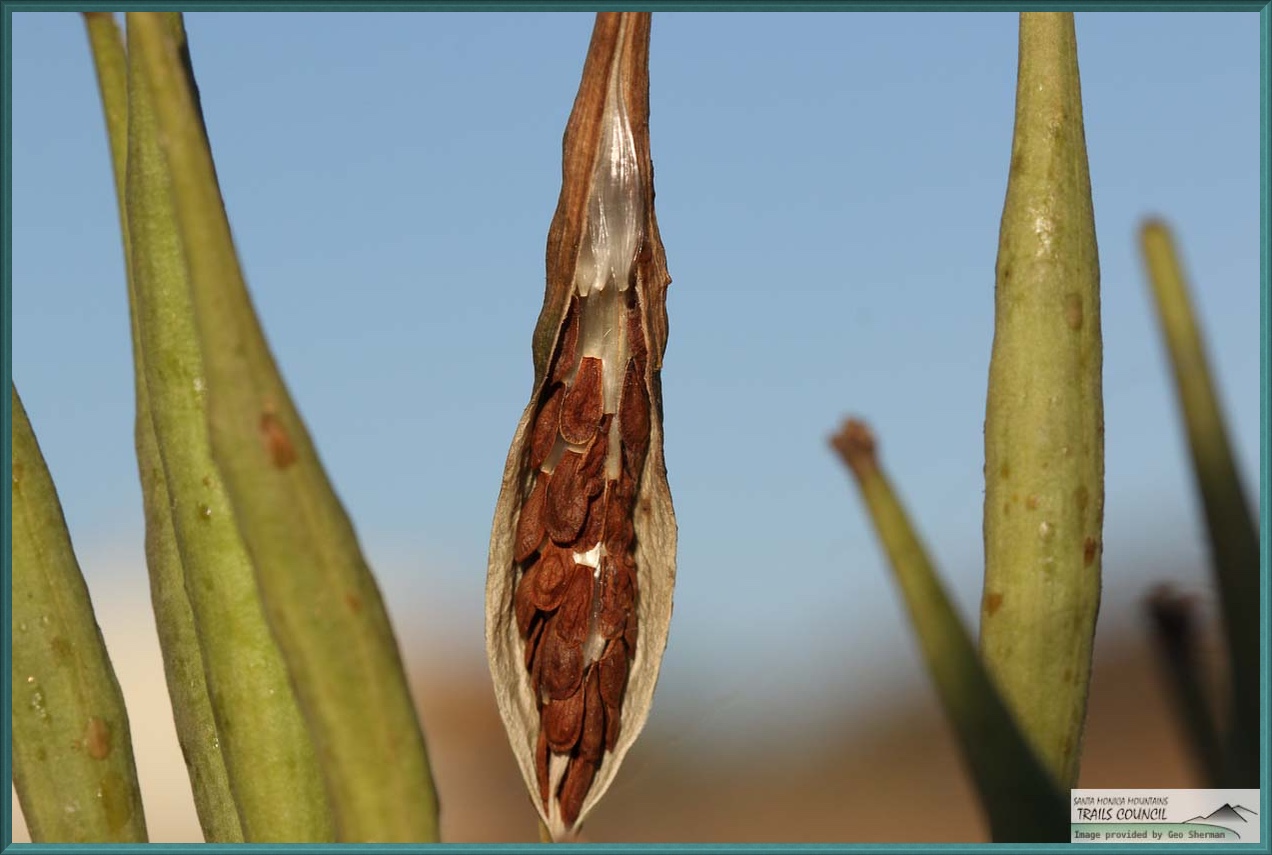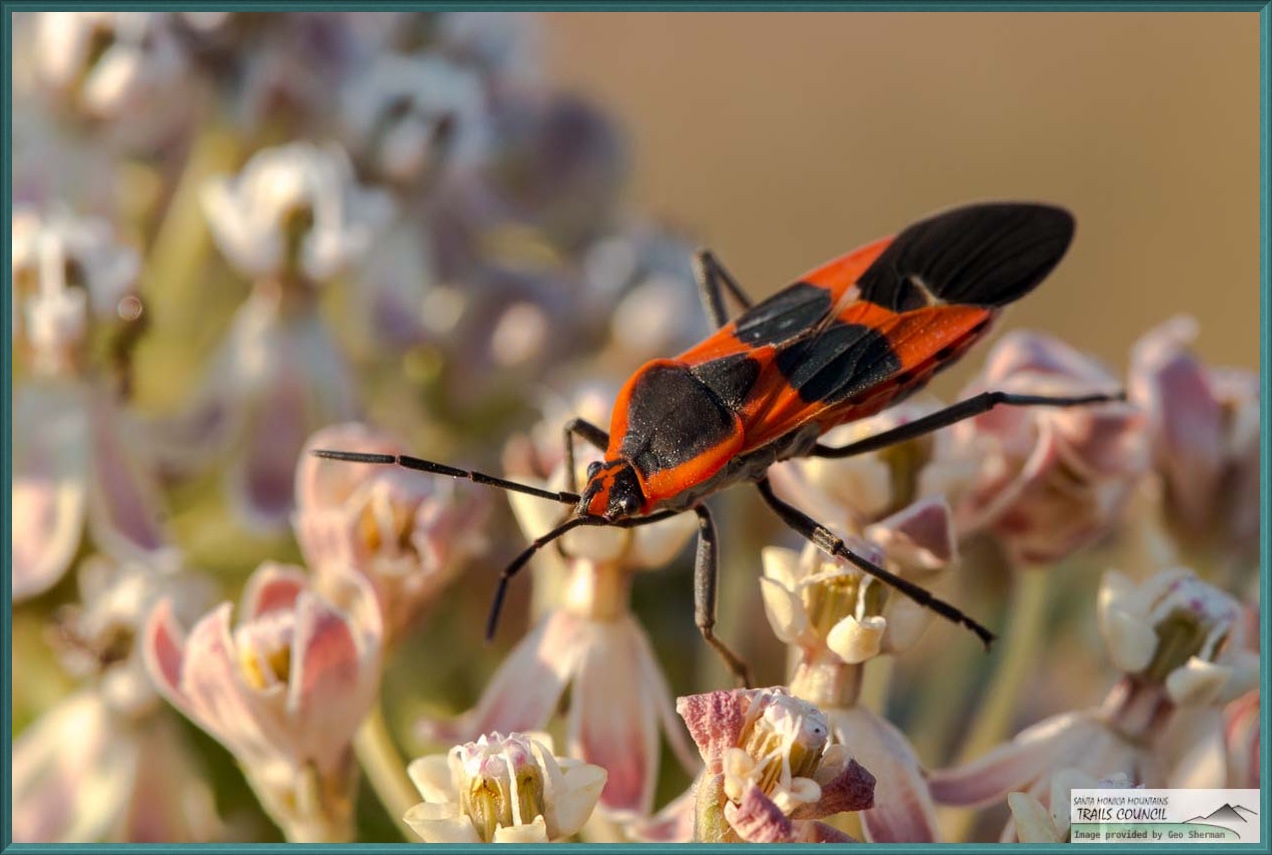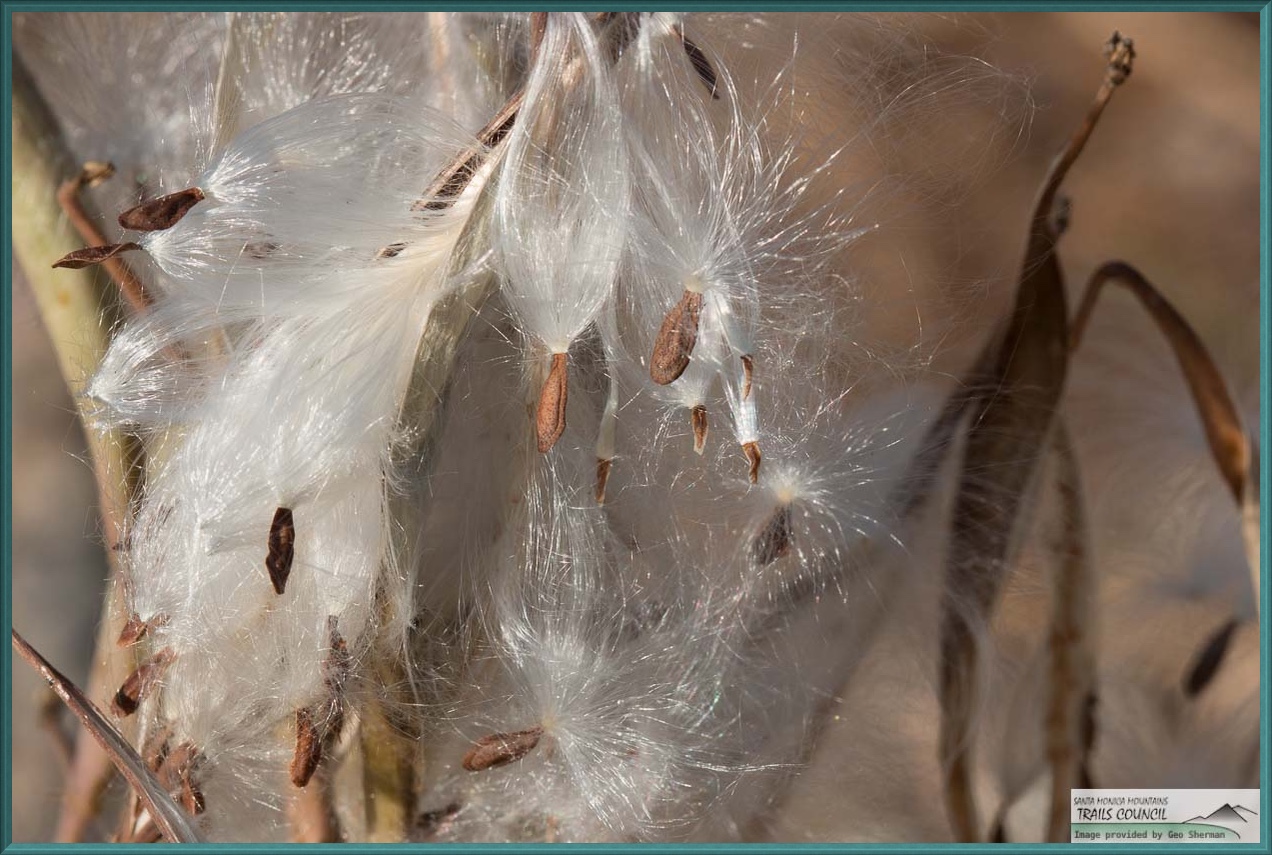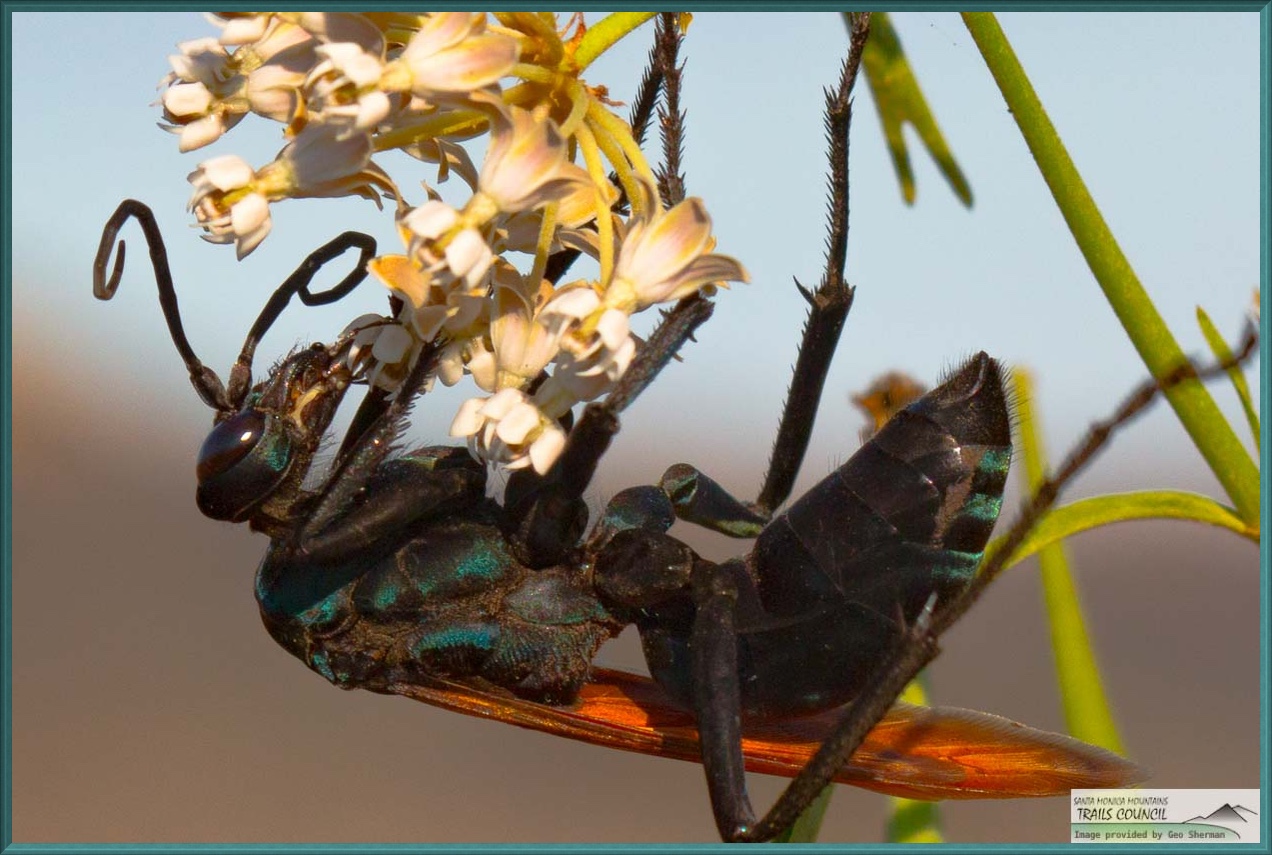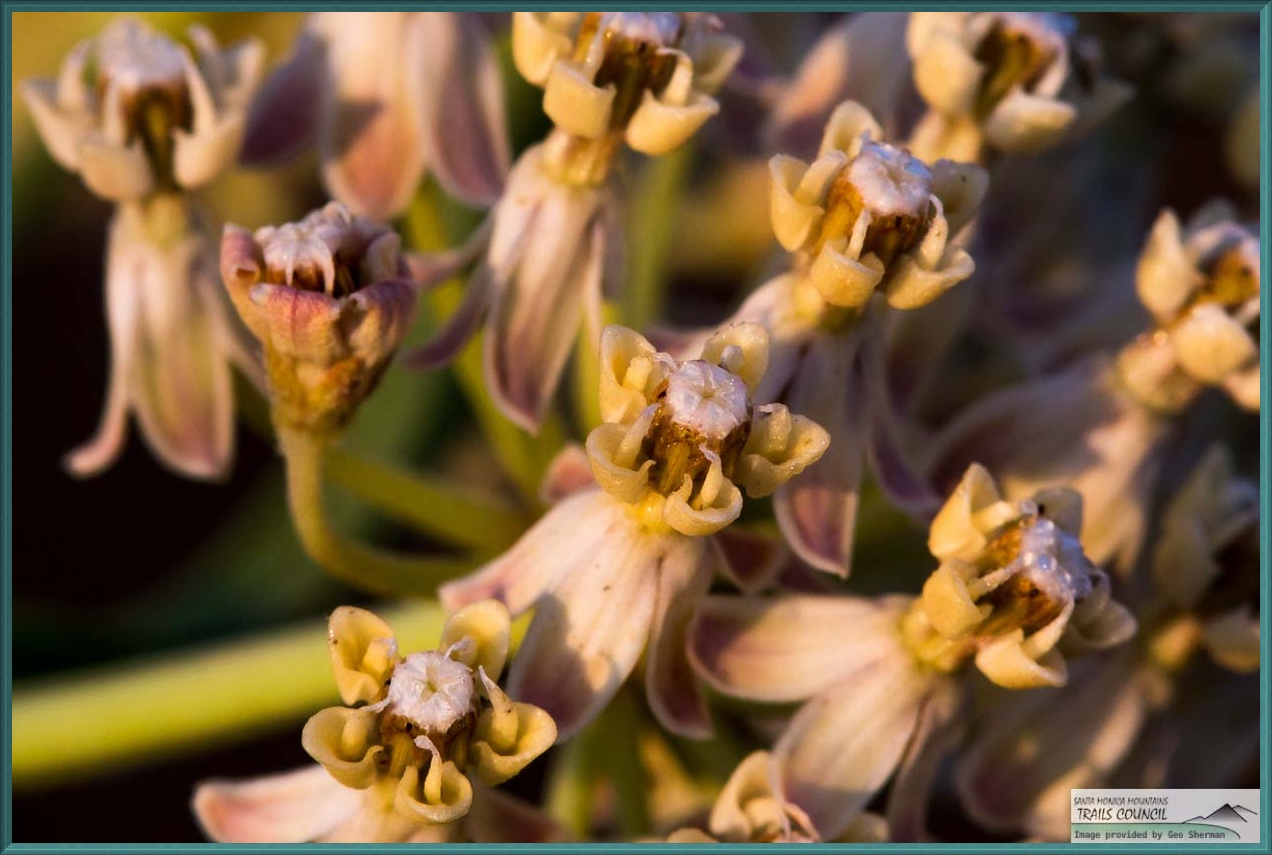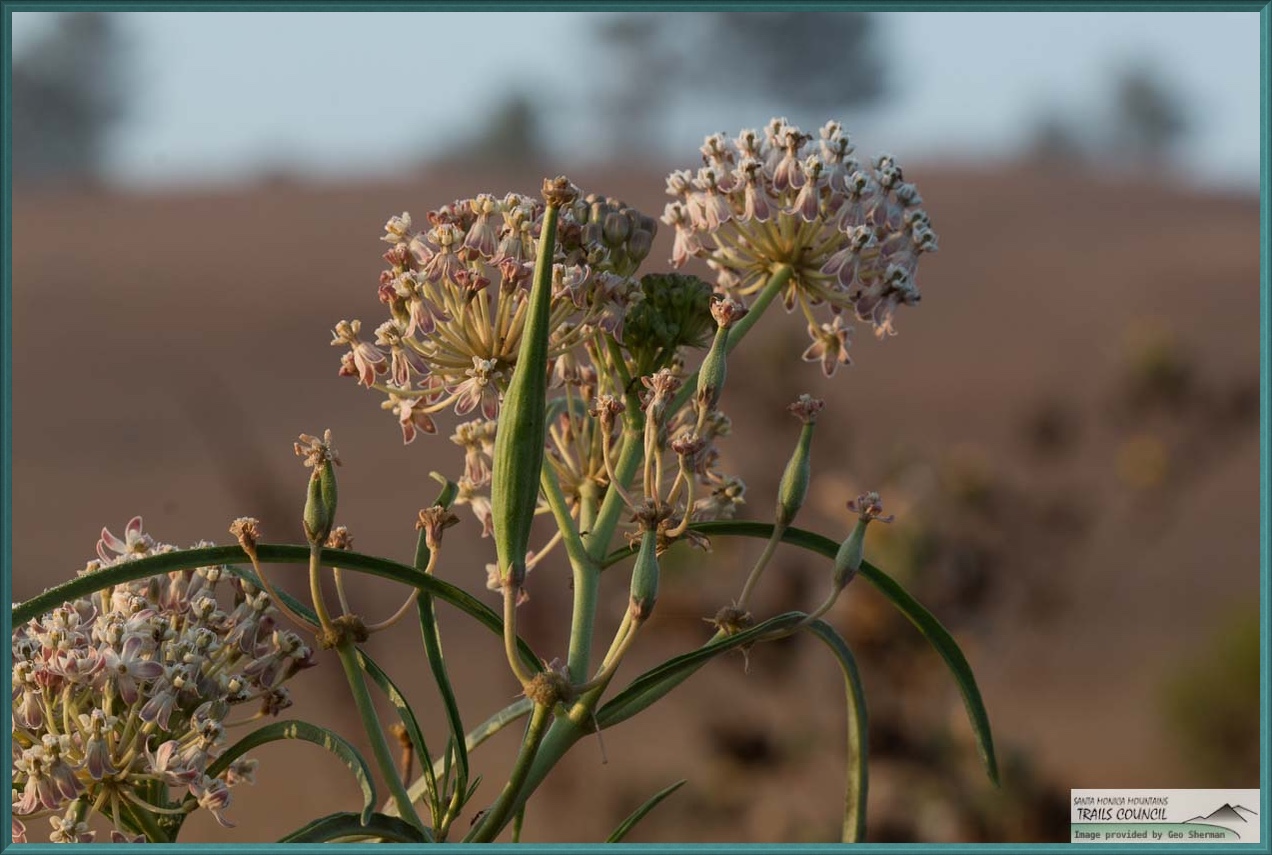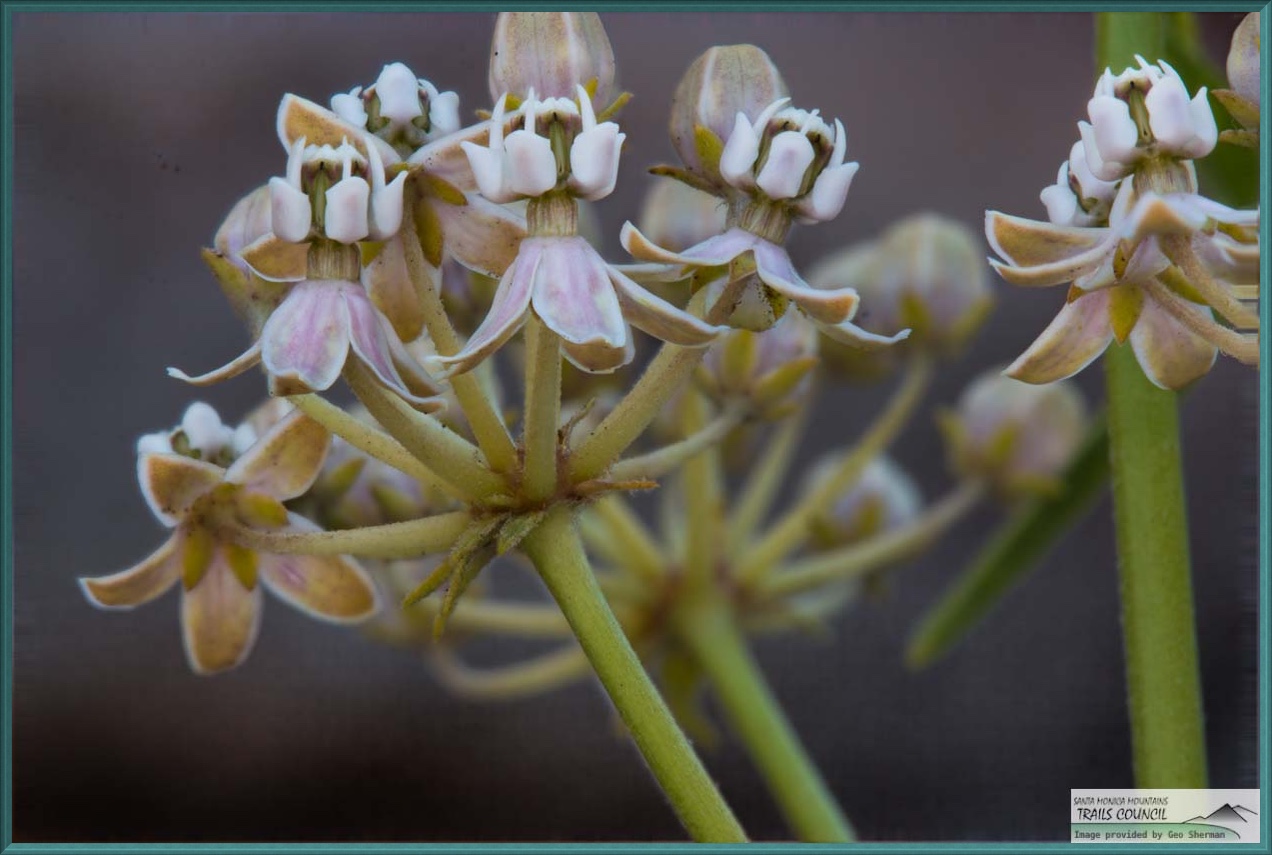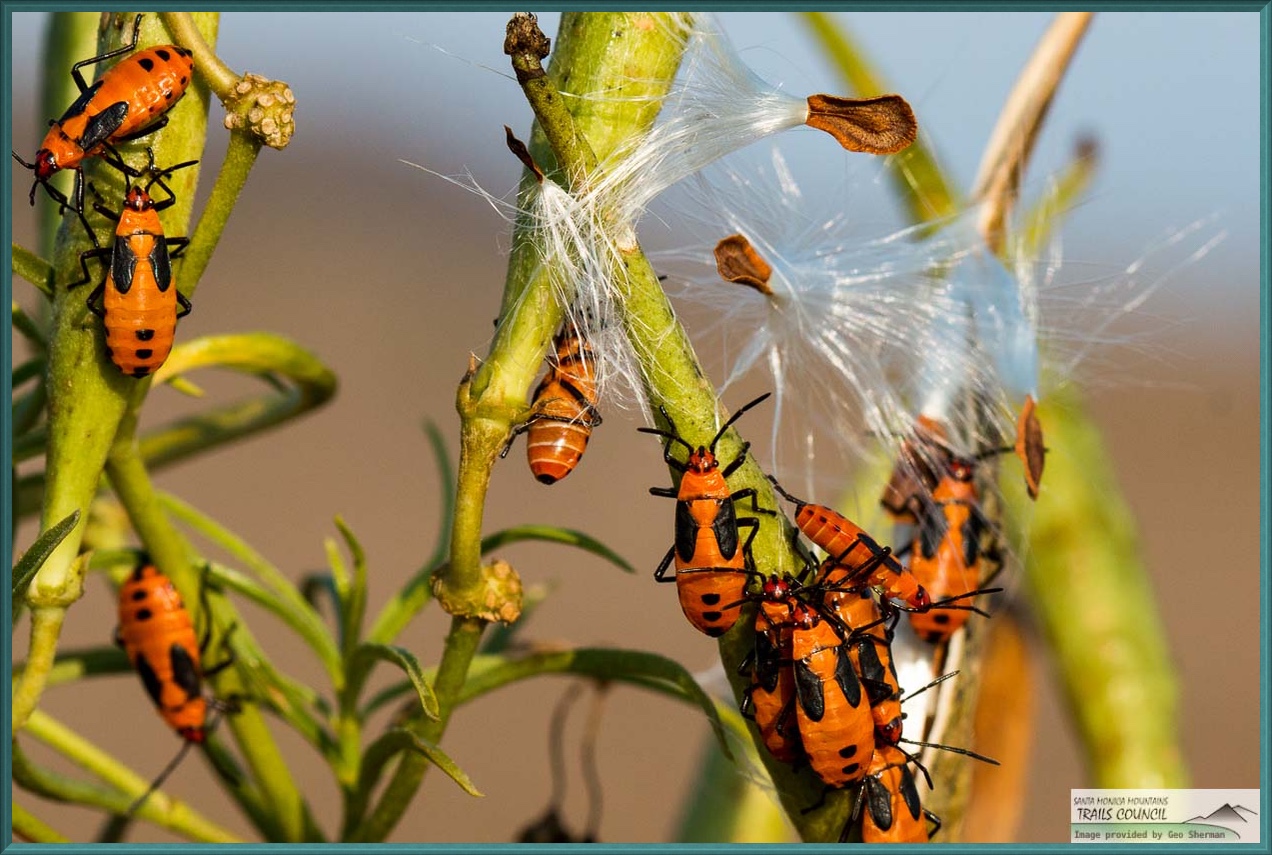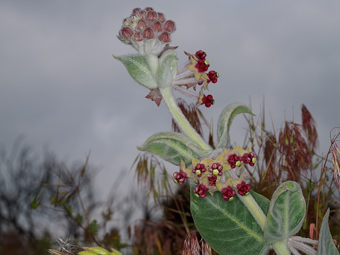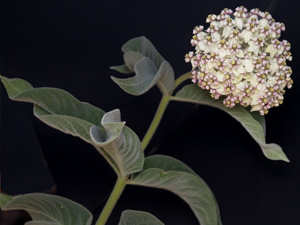Narrow Leaved Milkweed
- Asclepias fascicularis
| Common Name(s): | Narrow Leaved Milkweed |
| Scientific Name: | Asclepias fascicularis |
| Family: | Apocynaceae (Dogbane) |
| Plant Type: | Perennial |
| Size: | up to three feet |
| Habitat: | Grasslands |
| Blooms: | May to September |
| Fire Response: | Germinate from Seed |
Narrow Leaved Milkweed - Asclepias fascicularis a perennial, is one of four species of Milkweed found in the Santa Monica Mountains, grows in grassland habitats and flowers from late May into the first days of Fall. Leaves are long and narrow (up to five inches) and form a whorl (spiral) around the 12 inch to 36-inch tall stem. A taproot connects the stem to the soil.
The plants are a hotbed of insect activity. Wasps, Butterflies,Bees, Beetles, Ants, Aphids and so on are attracted to the Sucrose rich (3%)1 nectar. Cool fact - the flowers are continuously replenished with nectar while the flower is viable. Most of us think Monarch Butterfly when we hear the name Milkweed and for good reason. Monarch Butterflies lay their eggs on the plant, the larvae eat the leaves, grow into caterpillars before transforming into Butterflies. The plant contains a chemical - cardiac glycoside - which is toxic to many living creatures. Consuming any part of the plant causes vomiting or worse and so makes those creatures that can consume the plant unpalatable to many predators. The Large Milkweed bug - Oncopeltus fasciatus - feed on the seeds and sap while the Cobalt Milkweed Beetle - Chrysochus cobaltinus feed on the leaves. Surprisingly - one of the larger wasps you will see in the Santa Monica Mountains - is a Milkweed aficionado known as the Tarantula Hawk. This plant produces more nectar, seeds and pollen than it could ever use to the benefit of the environmental niche the plant occupies. After the flowers and leaves have died back in the Fall, Spring rains will signal the plant to re-sprout yet again. Female Milkweed bugs may deposit eggs on the stem and roots after the foliage is gone and this larvae will emerge in the Spring2.
The individual flowers are clustered in a ball shape (up to five inches in circumference) containing up to fifty flowers. These flowers are minuscule - about 1 centimeter - small enough that I had a hard time capturing them even with a macro lens. If you take the time, you will see five hoods and five horns surrounding the center of the flower. These hoods are the fused Stamens (Male Sexual Organs) of the flower. These hoods contain the nectar that attracts the pollinators. There are five Sepals and five petals that are parallel to the reproductive parts of the flower. The petals are some distance away from the reproductive parts of the plant and are what Botanists call "reflexed down". The complicated center of the flower contain the Anthers, Ovaries, Stigma and other parts. The Pollen is a little different from other flowers. Imagine a saddlebag consisting of pollen grains; Botanists define this as a "Pollinium." Moving these "saddlebags" from flower to flower after getting caught on the legs of bees and wasps is how pollination occurs. The process of getting the pollen to the right location is improbable. As the pollinator moves from plant to plant, stepping into and out of several slits in the stigma that provide access to the female reproductive organs, pollination can occur. Picture number three shows a Bee with a Pollinium on each side. After pollination comes another transformation. The pollination process fertilizes perhaps 200 ovules (ungerminated ovum). As the seeds mature, the flower dies but sits atop an ever-lengthening seed pod. At some point the seed pod dries, cracks open and the seeds begin dispersing.
Uses of Milkweed: After the leaves dropped and the stalks had dried, Milkweed was ready for processing. Splitting the dried stalks into thinner strips created tough fibers for making cords, ropes, and weaving a coarse cloth. Hundreds of plants would be necessary to obtain sufficient quantities of fiber. Milkweed was so useful that having it in plentiful supply meant that the native peoples would manage their harvests by burning grasslands from time to time to encourage new growth.
Link to Calflora.net - the best source of this fascinating information
Name Origin: Asclep'ias: named for the Greek God of healing Asklepios fascicula'ta/fascicula'tum/fasicula'tus: derived from a Latin word meaning "bundles" and describing the way the leaves are attached to the leaf stem in little bunches or 'fascicles'.
- Holdrege, Craig. "Nature Institute: Viewing Nature, Science, and Technology in Context." The Nature Institue 2010. Web. 20 Jan. 2017. deep link [https://www.natureinstitute.org/article/craig-holdrege/the-story-of-an-organism-common-milkweed]
- Reference Material for Milkweed Bugs
- Milkweed Reference Material from the USDA
Contributed by George Sherman
Featured Plants in the Apocynaceae (Dogbane) Family:
Last modified: July 13 2025 16:52:15.
Number of Images: 20
Image Size Total: 5,059,484
References:
Wildflowers of the Santa Monica Mountains, by Milt McAuleyFlowering Plants: The Santa Monica Mountains, Coastal and Chaparral Regions of Southern California, by Nancy Dale
Chumash Ethnobotany: Plant Knowledge Among the Chumash People, by Jan Timbrook
Leaf Shapes Primer - Botanical Terms for Leaves: - Link

